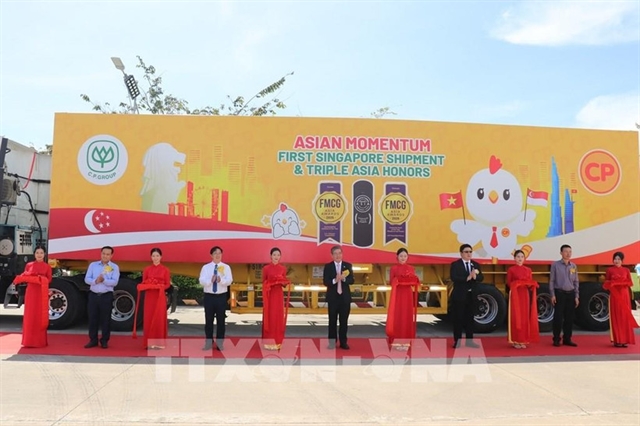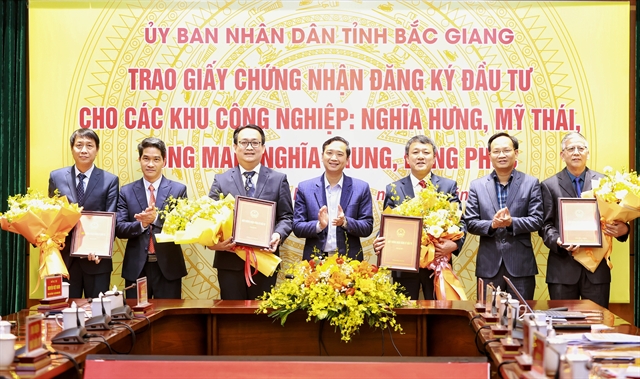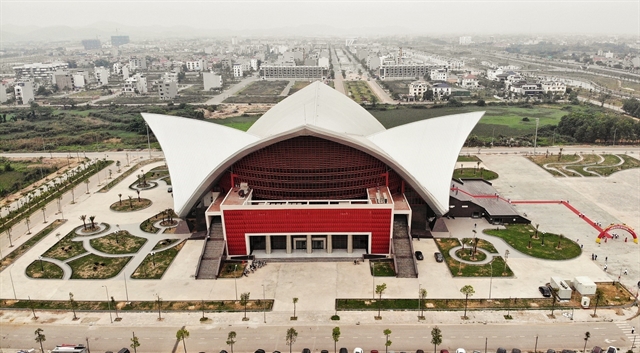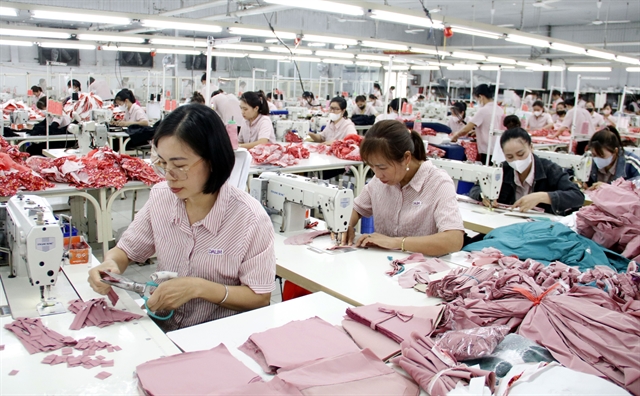 Economy
Economy


|
| The investment certificate awarding ceremony for four projects involving the construction and operation of industrial park infrastructure. — VNS Photo |
HÀ NỘI — The merger of Bắc Giang and Bắc Ninh into a single administrative unit is more than a political and bureaucratic shift — it marks the dawn of a new development era for the Kinh Bắc region, with the ambition of becoming a 'super province' of industry, a large-scale manufacturing hub, and a strategic growth engine for Việt Nam.
Under Resolution No 60-NQ/TW issued on April 12, 2025, at the 11th meeting of the 13th Party Central Committee, the two provinces were officially merged to form the new Bắc Ninh Province, with its political and administrative centre located in Bắc Giang City.
This historic move, the first of its kind in decades, unites two of northern Việt Nam’s key industrial centres into a powerful socio-economic entity. The newly formed province will boast a larger scale, unified planning, cultural harmony, and enhanced regional competitiveness.
The new Bắc Ninh covers an area of over 4,718sqq.km and is home to more than 3.6 million people. Its combined economic output in 2024 reached nearly VNĐ440 trillion (approximately $16.9 billion), with Bắc Giang contributing over VNĐ207 trillion and Bắc Ninh more than VNĐ232 trillion. This places the new province fifth nationwide in gross regional domestic product (GRDP), trailing only Hồ Chí Minh City, Hà Nội, Hải Phòng, and Đồng Nai.
Beyond economic strength, the two provinces share deep historical and cultural roots as part of the ancient Kinh Bắc region. Known for its traditional crafts, heritage sites and the iconic quan họ folk songs, this cultural affinity creates a solid foundation for a smooth merger. It promises a dynamic, culturally rich development space that maximises local strengths.

|
| The Central Culture and Exhibition Centre building of Bắc Giang Province. — VNS Photo |
Nguyễn Văn Gấu, Party Secretary of Bắc Giang, stressed that the longstanding historical, cultural, and social bonds between the two localities will allow for the effective consolidation of their respective strengths.
Nguyễn Anh Tuấn, Party Secretary of Bắc Ninh, agreed, noting that Bắc Ninh is revising its urban master plan to accommodate major infrastructure such as a new international airport and a direct link to Nội Bài International Airport. The merger, he added, would ensure synchronised planning and infrastructure connectivity.
Nguyễn Việt Oanh, Chairman of Bắc Giang’s People’s Committee, said the unification would facilitate the restructuring of production, the reallocation of industries, and the redesign of urban and industrial-service ecosystems, while attracting investment and supporting the development of smart cities, trade and tourism.
Strategically positioned in northern Việt Nam’s key economic zone, the new province lies along major economic corridors such as Lạng Sơn – Hà Nội – Hồ Chí Minh City and Nanning (China) – Lạng Sơn – Hà Nội – Hải Phòng – Quảng Ninh. It occupies a central role in the Hà Nội – Hải Phòng – Quảng Ninh growth triangle and serves as a gateway linking the capital to the northeastern region, enabling the formation of regional-scale supply chains in industry, commerce and services.

|
| Production at DAUM&QQ Co., Ltd. in Hiệp Hòa, Bắc Giang, a wholly South Korean-invested company. — VNS Photo |
Geopolitics aside, the new province also enjoys an industrial infrastructure advantage. Bắc Giang currently hosts 16 industrial parks and 55 industrial clusters, employing over 342,000 workers. Bắc Ninh contributes 16 industrial parks and 31 clusters, home to multinational giants like Samsung, Amkor, Foxconn, Canon and Goertek.
With abundant land and an existing investor ecosystem, the merged province is poised to become Việt Nam’s 'strategic factory' within the global electronics, high-tech, and semiconductor supply chains.
Deputy Prime Minister Nguyễn Hòa Bình said the new Bắc Ninh would evolve into a smart city and a centrally governed municipality by 2030. Key infrastructure projects — such as the Gia Bình International Airport, new expressways, and large-scale industrial and urban zones — are expected to reshape the regional landscape.
Bắc Ninh (new) is not only set to become a northern economic powerhouse but also a cultural, logistics and national defence hub. It will be a nexus of connectivity, linking regions across Việt Nam and integrating the country with the wider region and world. — VNS




